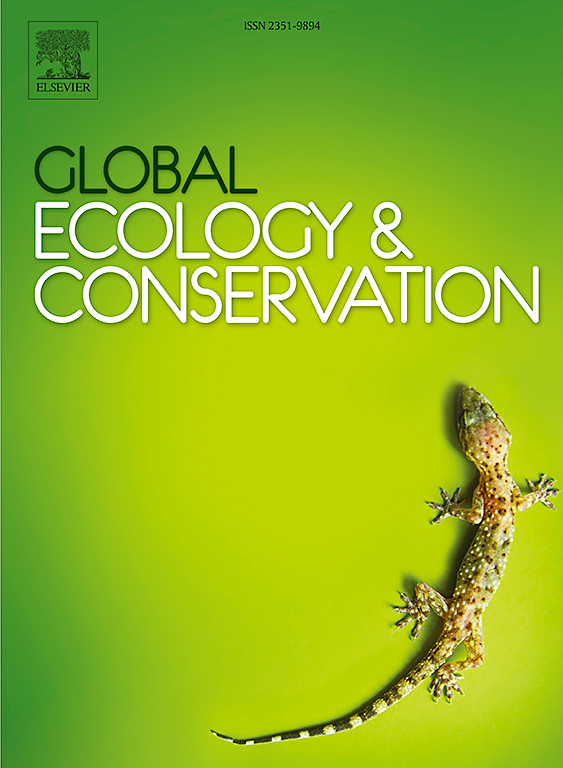圈养环境下真正的受精失败是罕见的
IF 3.4
2区 环境科学与生态学
Q1 BIODIVERSITY CONSERVATION
引用次数: 0
摘要
通过圈养繁殖的物种恢复可能因繁殖成功率低而受阻。然而,由于在大多数动物中难以区分受精失败和早期胚胎死亡,我们对圈养种群早期生殖失败的驱动因素知之甚少。在这里,我们应用先进的生育诊断技术对来自30个鸟类圈养繁殖项目的未孵化蛋进行评估,以评估受精失败率。我们发现受精失败在所有物种中都很少见,早期生殖失败的主要驱动因素是早期胚胎死亡。我们还发现,对未发育卵子的宏观检查夸大了育种计划中受精失败率的估计。最后,我们没有发现任何证据表明受威胁的圈养鸟类的受精失败率高于未受威胁的圈养鸟类,这给人们带来了希望,即通过精心的管理,可能会改善受威胁的圈养鸟类的孵化结果。我们的研究结果表明,在管理的卵生物种中,准确的生育诊断提供了个体生殖潜力的重要信息,有助于设计更合适的管理干预措施以提高恢复。本文章由计算机程序翻译,如有差异,请以英文原文为准。
True fertilisation failure in captivity is rare
Species recovery through captive breeding can be hindered by low reproductive success. However, we know little about the drivers of early reproductive failure in captive populations, due to difficulties distinguishing fertilisation failure from early embryo mortality in most animals. Here, we apply advanced fertility diagnostics on unhatched eggs from 30 avian captive-breeding programs, to assess true rates of fertilisation failure. We find that fertilisation failure is rare across all species, and the main driver of early reproductive failure is early embryo mortality. We also find that macroscopic examination of undeveloped eggs inflates estimates of fertilisation failure rates in breeding programmes. Finally, we find no evidence that fertilisation failure rates are higher in threatened than non-threatened captive birds, providing hope that with careful management, hatching outcomes may be improved in threatened captive populations. Our results show that accurate fertility diagnosis in managed oviparous species provides crucial information on individual reproductive potential, helping the design of more appropriate management interventions to improve recovery.
求助全文
通过发布文献求助,成功后即可免费获取论文全文。
去求助
来源期刊

Global Ecology and Conservation
Agricultural and Biological Sciences-Ecology, Evolution, Behavior and Systematics
CiteScore
8.10
自引率
5.00%
发文量
346
审稿时长
83 days
期刊介绍:
Global Ecology and Conservation is a peer-reviewed, open-access journal covering all sub-disciplines of ecological and conservation science: from theory to practice, from molecules to ecosystems, from regional to global. The fields covered include: organismal, population, community, and ecosystem ecology; physiological, evolutionary, and behavioral ecology; and conservation science.
 求助内容:
求助内容: 应助结果提醒方式:
应助结果提醒方式:


